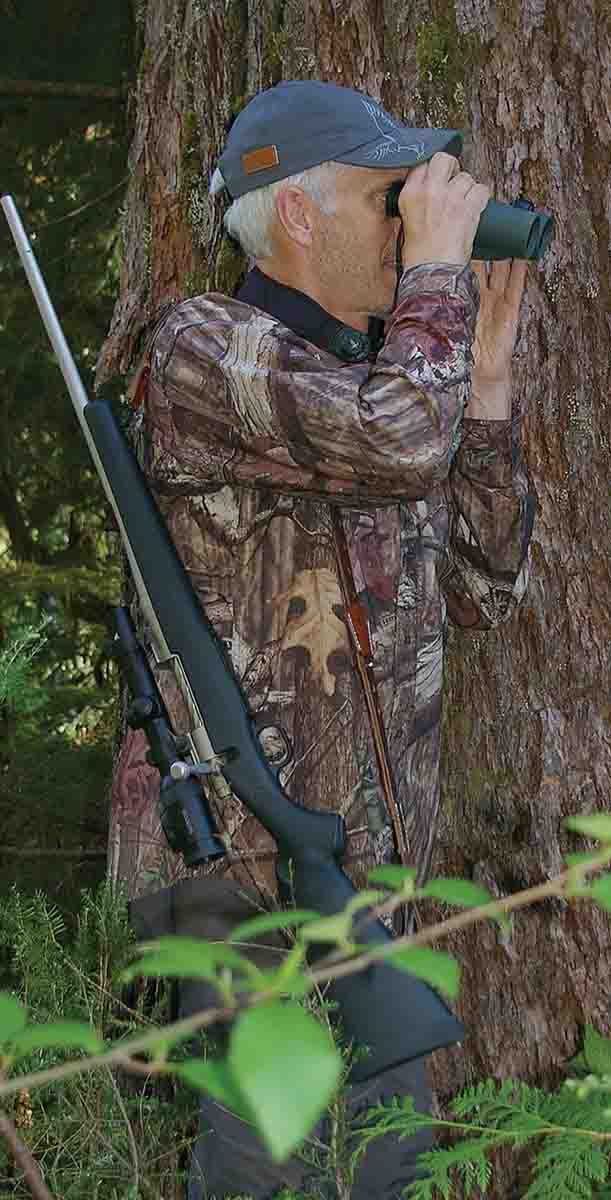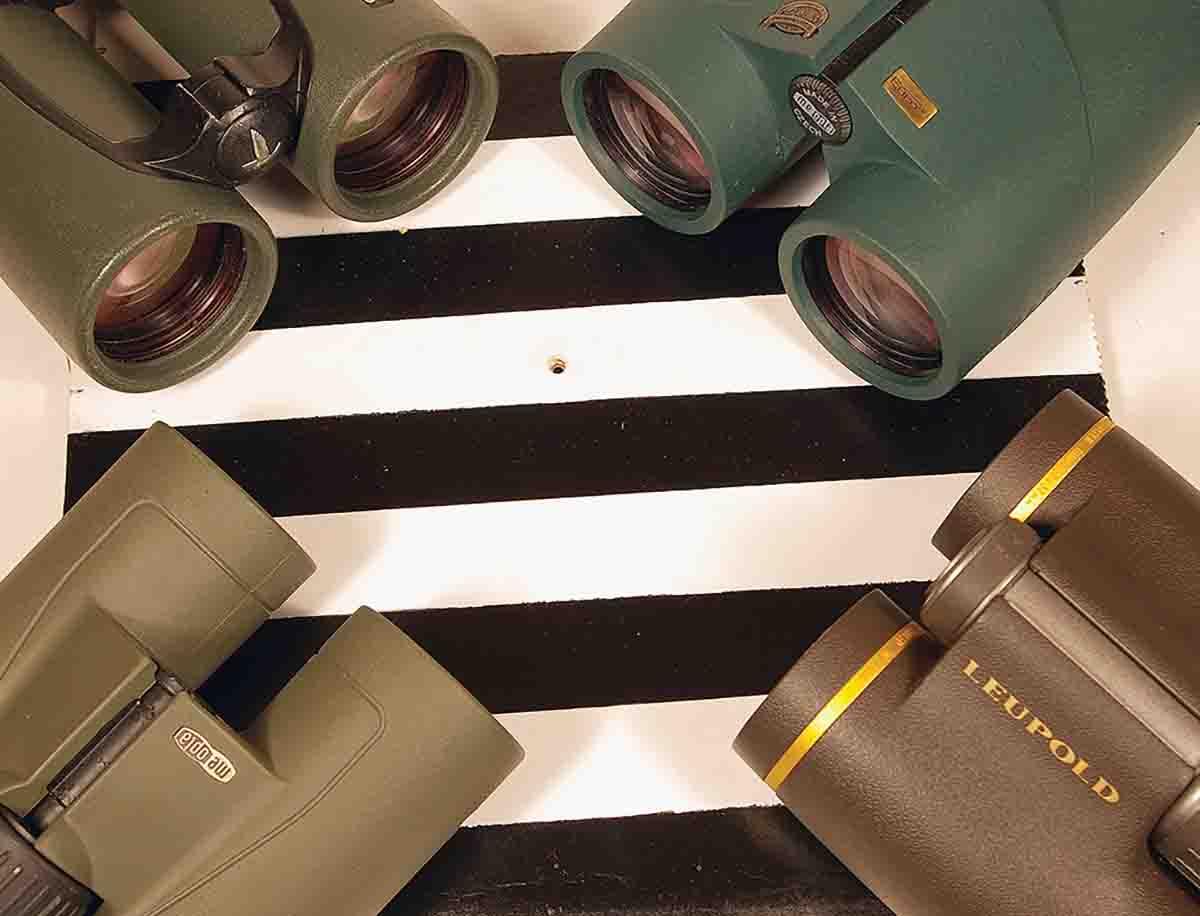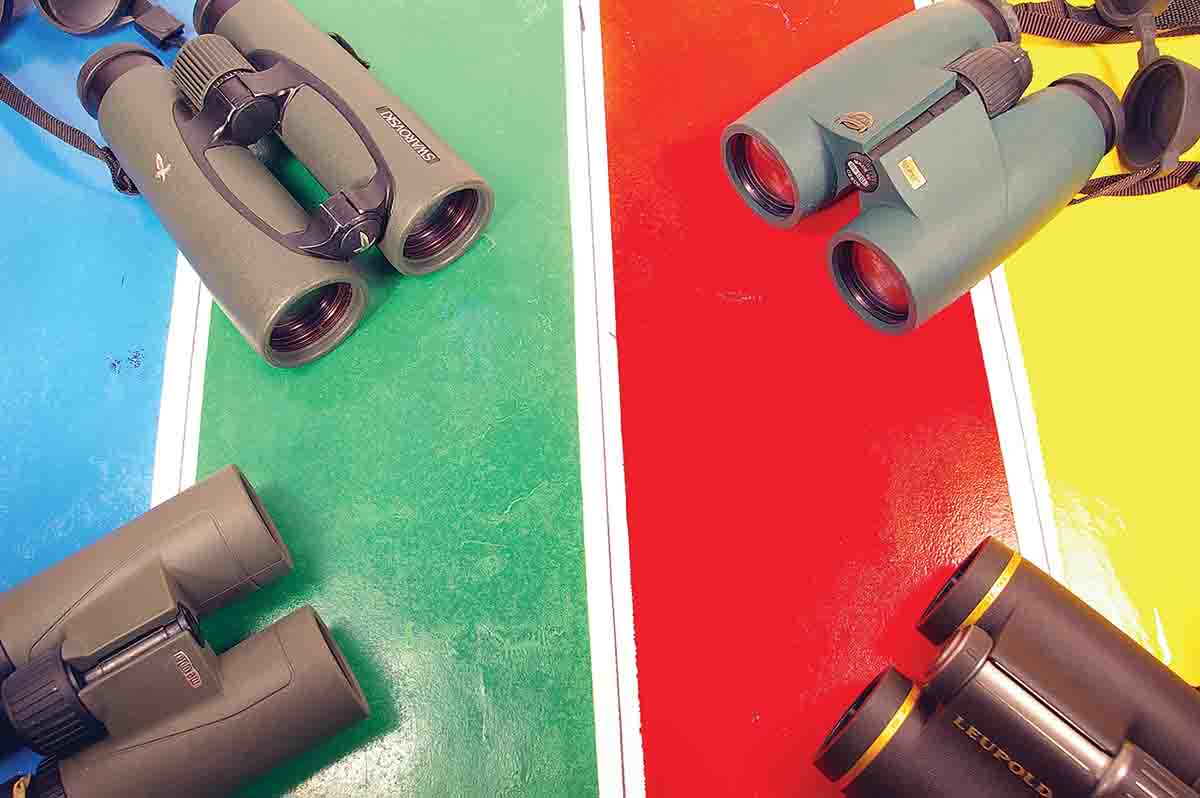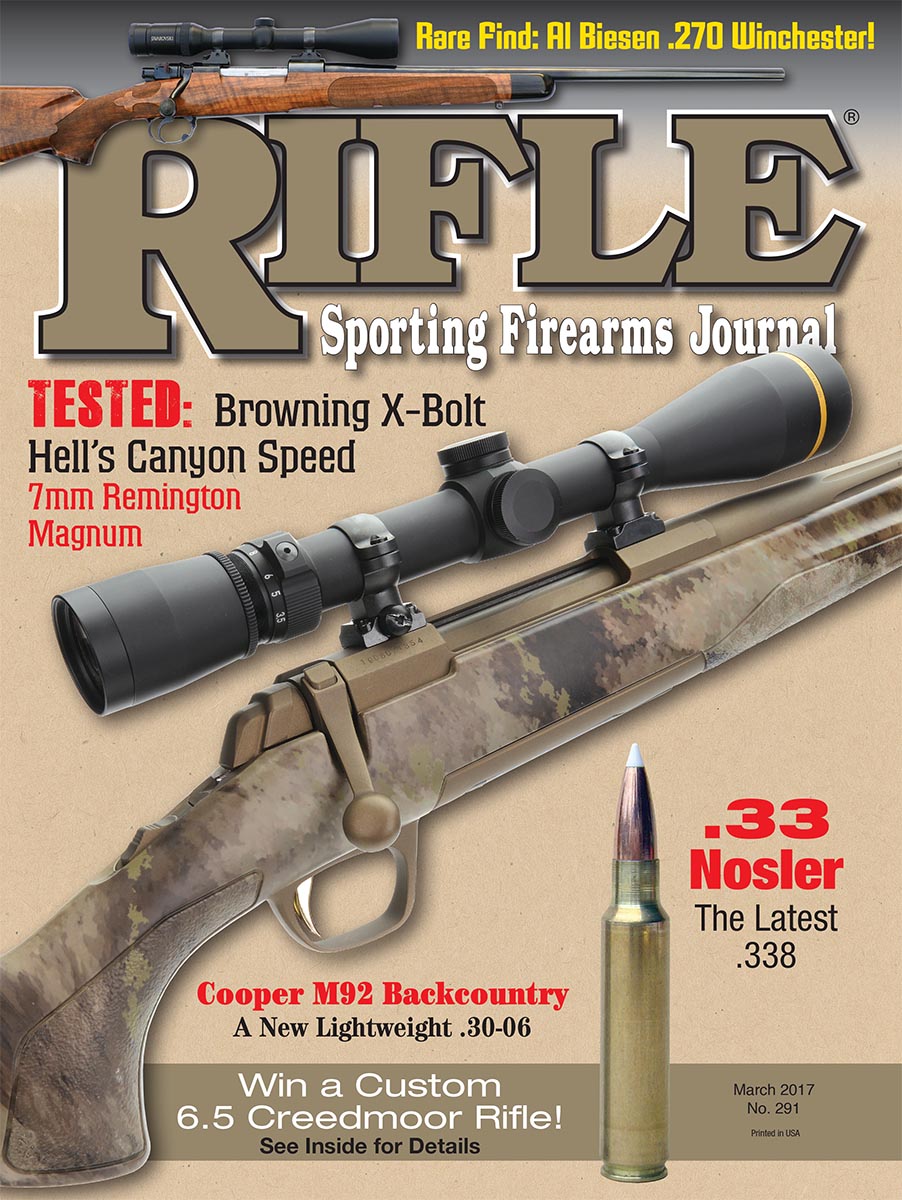A Rifleman's Optics
Low Light Binocular Testing
column By: John Haviland | March, 17

Our eyes change how they operate as bright daylight fades to twilight and then dark. The eyes use cone photoreceptors located mainly in the center of the retina to see during high levels of daylight, which provide sharp sight and color vision and a sensitivity to low light. As daylight wanes, the eyes see with cone and rod photoreceptors located primarily at the edges of the retina. Cones continue to provide color vision and sharp vision on smaller objects. Objects within peripheral vision are seen with rods with poor acuity and absence of color vision. Color vision fades once rods begin to provide most vision in increasing darkness. Since rods are more sensitive to light, dimmer objects can be viewed best in peripheral vision. So looking at an object with the edge of your vision provides a brighter view. Rod sensitivity improves considerably after 5 to 10 minutes in the dark, and it takes about 30 minutes of darkness to reach full sensitivity.
It’s never truly dark outside. I used to work in an underground mine. When a headlamp broke or was switched off, I literally could not see my hand in front of my face, but on the surface there is usually some light. The moon reflects some sunlight, and city lights glow on the horizon. Even a distant yard light and the stars provide a hint of light.
Four binoculars were tested to determine how bright a view they provided in low light: Cabela’s Euro HD 10x42, Leupold Gold Ring 8x32 HD, Meopta Meopro 8x32 HD and a Swarovski EL 10x42. Each binocular was focused on a test board in full daylight, then was carefully placed on a table. Precisely focusing a binocular on an object in low light is difficult and takes some time, because of the indistinct view. Often, a deer can wander out of sight while you dial back and forth to attain a precise focus.
For the test, a 10-inch square board painted with one-inch wide, alternating black and white lines was pinned up to test the ability of each binocular to provide contrast, and a paper painted with stripes of blue, green, red and yellow was used to check color rendition at 55 yards from my table full of binoculars. Ten feet in front of the board and colored paper, a bare 60-watt bulb in a lamp was connected to a rheostat. The rheostat was marked with numbers, the lowest indicating the dimmest light on up to the brightest. With the bulb barely glowing and up to the No. 1 and No. 2 settings, I could not see the test board or colored paper through the dark with my eyes.

On an October night when light had faded from the sky, I sat outside for most of a half-hour to let my eyes adjust. Just before I was going to start testing the binoculars, a white-tailed deer snorted in the field behind me. Try as I might, I could not see it. I picked up a binocular off the table, which happened to be the Swarovski, and scanned the field. The deer came into view about 50 yards away as a black silhouette contrasting with the field of bleached dry grass. The only color was a flick of its white tail. The binocular also showed the silhouettes of four other deer in the field. Seeing those deer showed the ability of a binocular to provide contrast is an important feature in low light.
I shifted the Swarovski view toward the black-and-white lined board and painted paper. My eyes were adjusted and pupils dilated, but only the black of the night was visible through the binocular. The black and white lines became discernible as the light bulb barely began to glow and then became distinct when the light increased to the No. 1 setting on the rheostat. The colored stripes remained dark. A slight increase in the light showed the yellow stripe as white, green as nearly black and blue as black. Red appeared red. My ability to see red indicated the cones in my eyes were working.
The view started to dim somewhat if I looked at the board and poster for more than 10 seconds or so. That was the result of light flowing through the binocular into my eyes, causing my sight to revert to the cones and my pupils to contract. The lesson here is to keep your eyes in the dark as much as possible by not looking at light, such as on the horizon, and to lower your binocular every few minutes. Cupping the hands around the outside of the ocular lens and the edge of the eyes blocking light coming in from the sides also helps.
Using the Leupold Gold Ring binocular, the black and white lines were clear with the light bulb turned to the No. 1.5 setting, but the colored stripes remained black. A small boost of light showed the blue and green as black, yellow as white, and there was a hint of red.

With the light setting back at No. 1.5, I looked at the black and white lines with the outer edge of my vision to allow the rods in my eyes to provide a brighter view. The view was clear at the outer edges but not as bright as the center of the view, and my eyes wanted to shift back to the center of the view. After a minute, my eyes began to strain. Looking at an object with peripheral vision may provide a brighter image but not through a binocular.
The Meopta Meopro 8x32 HD provided a view similar to the Leu-pold at the No. 1.5 light setting. A small increase of light showed the blue as black, yellow as white, and again there was a trace of red and green.
The Cabela’s Euro HD 10x42 required a touch higher light setting than 1.5 to distinguish the black and white lines. At that setting, red and blue appeared black, and yellow was white. There was some green visible.
Although the two 10x42 binoculars provided 4.2mm exit pupils, the Swarovski provided better contrast and brightness than the Cabela’s Euro. That’s expected, as the Swarovski cost nearly three times more than the Euro. I was impressed with both 8x32 binoculars. Although their objective lenses were 10mms slimmer and the exit pupils a bit narrower at 4mms, they required only a smidgen more light than the Swarovski to distinguish between the black and white bars.
In coming weeks, I’ll be in the hills watching with my binocular to see what wanders past at the end and beginning of night, and I’ll be ready when shooting time dawns.


